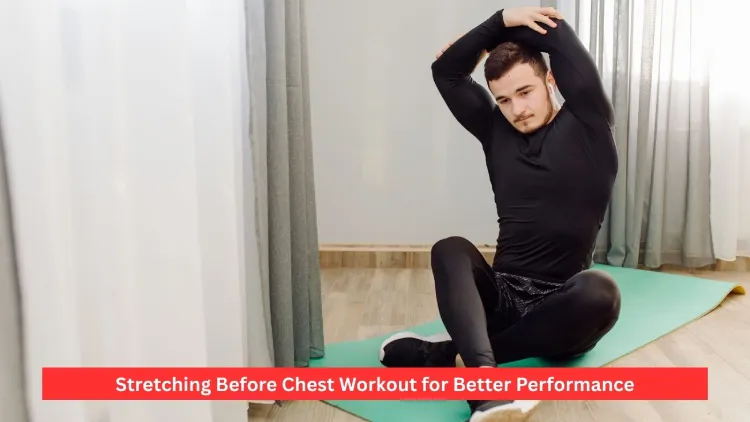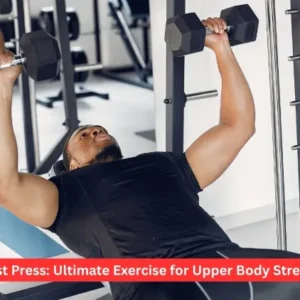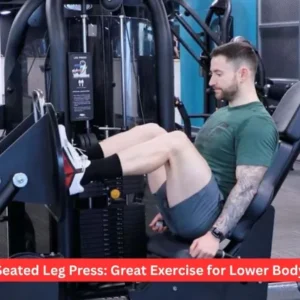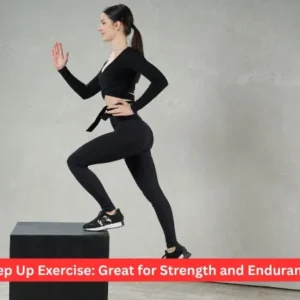Traditional body split lifters often find Sunday or chest day to be best for their routines. As well as looking attractive, having strong chest muscles supports actions everyone needs, like pushing open a door or standing up from the ground. If you don’t properly warm up, you will probably end up under your personal best on the bench press. For your success during chest workouts, it is advisable to take time to stretching before chest workout.
You can visit our articles on stretching before a workout in different variations. Also, know the importance of stretching before a workout.
Benefits of Stretching Before Chest Workout
Prepare your body for exercise, whether you do it early in the day or after your work day is over.
When you’re inactive, your body can lose balance and some muscles can stiffen, says Joe Rodonis. It could make it hard for you to lift as much as possible.
Stretching before chest workout, as described by Moore, needs to assist the flexion of the shoulders, spine and stabilisation of the shoulder blades movement.

Tips For Doing Stretching Before a Chest Workout
Warm up these three areas by using these special stretching movements before you start your chest workout.
1. Foam Roller
Why it works: As your warm-up, Moore suggests using a foam roller to gently roll your chest and upper back in mild circular movements. Increasing blood flow to your muscles and improving how flexible they are are benefits of foam rolling.
How to do it: Give your pecs and lats in your chest and your lats in your back a massage for about 30 seconds. Do small movements by moving the muscles just one to two inches in any direction.
2. Stretching the Thoracic Spine with the Use of a Foam Roller
Why it works: You can also extend (arch backwards) your back and boost your thoracic spine mobility by using the foam roller. According to Moore, “The spine is meant to move back and forth,” though because most of us tend to stay hunched forward over these devices, our ability to extend is often reduced.
How to do it: In a lying position on the floor, place your shoulder blades on the foam roller, which should be placed horizontally. Attempt to lift yourself slowly, shoulders first. Gently go down and repeat the motion.
3. 90-90 Arm Rotation
Why it works: Moore’s pre-chest workout stretch, 90-90 arm rotation, can be performed on a foam roller. “This spinal twist will assist with shoulder maintenance,” says Moore. “Alongside shoulder mobility, it will fully open your thoracic spine, allowing for thoracic rotation; this means your mid-back will move into your upper back.”
How to do it: Begin supine, lying on the side you are working. The top leg is at 90 degrees and resting on a foam roller, while the bottom leg is straight. Lay your forearm down so that it’s flat on the ground and palm facing forward. In this step, your upper arm can rest above your forearm. Simply lift your chest and your head towards the side on the same side as your upper arm. Reach the starting position and carry out the number of repetitions you wish. You can also visit our article on stretching before an arm workout.
4. Foam Roller Chest Stretch
Why it works: Suggested by Rodonis, this foam-rolling exercise should be done at the end of a foam rolling session, vault by the chest workout. “You’re preparing your pecs while simultaneously mobilising your spine,” he explains.
How to do it: Lie sideways and place a foam roller vertically under your shoulder blades. Grasp the barbell in an upright position over your chest, and then extend your arms straight up, attempting to lower the barbell as near to the ground as possible.
5. Bench-Press Lat Stretch
Why it works: Restricted mobility in the shoulders is often the result of tight lat muscles. Including this exercise in your chest routine will mitigate your tight lats and can prevent shoulder and anterior delt pain while bench pressing, he adds.
How to do it: Using a barbell grasped with an underhand grip, kneel on both knees facing the bench. Rest your elbows on the bench. With your hips facing your feet, take a seated position and drop your head between your arms toward the bench. Maintain for 3 seconds, then repeat.
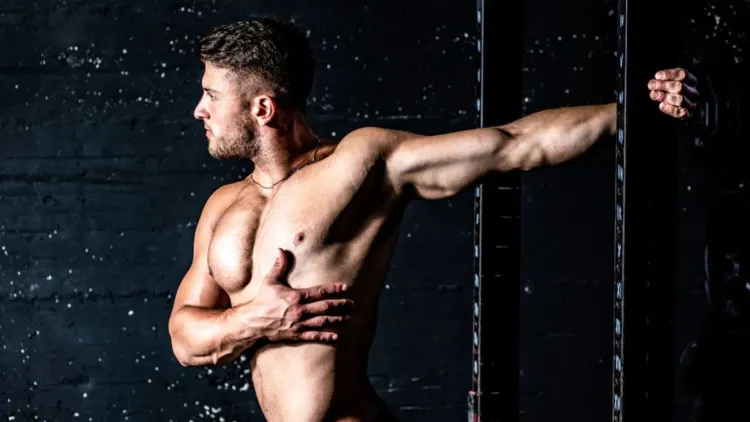
6. Reach-Rotate Opener
Why it works: In the transverse plane during a bench press, some part of your upper arms is used, which helps your workout.
Moore suggests that it’s just as important to include twisting and chopping movements when you warm up, since this is where most back injuries occur. Before fully executing, she likes to rotate the spine and shoulders together.
How to do it: Lie down on the mat, beginning on your knees and move back onto your heels to take the cow face pose.
Take one hand, plant it in front of you on the floor and then bring the other hand to your ear with the elbow bent. Do a hook move with your torso and take your loose arm to the side of the bent elbow at the same time.
7. Floor Slide
Why it works: Floor slides appear to be straightforward, but they’re harder than they look and wonderful for shoulder mobility. According to Moore, the purpose of this is to “open up your thoracic spine and get your shoulders moving.” You should make sure the shoulder blade is rotating upward, right behind your rib cage.
How to do it: Get down onto your mat with your feet flat on the floor and with your knees pointing up. Move as if your arms were reaching for an object that is up above you. Spread your arms apart so your palms face up and make sure your arms are as straight as possible while reaching for something above your head. Pull your arms back to where they first started, with your elbows bent.
8. Prone Floor Angel
Why it works: Like floor slides, it improves your shoulder flexibility. For Rodonis, lying facedown is special since this way improves back strength better than our common forward bends. He notes that it “stops us from moving forward and rotating our ribs inside our body.” “We are restoring how the shoulder works correctly.”
How to do it: Lie down facing downward and put your arms to each side on the floor. Take your head, shoulders and hands up off the floor. Lift your arms above your head, still with your palms down, and bring your biceps next to your ears. With your hands stretched out, slightly raise your arms, pause, bring them down and go back to the start.
9. Scapular curls
Why it works: For better results, Moore says you should do this variation of curls that focuses on your shoulder blades. It gives you a good starting point for using the bench press.
How to do it: Make your chest reach toward the floor by straightening your arms and squeezing your shoulder blades right next to each other. Shove the floor away from yourself and spread your shoulders using your chest.
10. Plyometric Push-Ups
Why It Works: If Rodonis is working on power, he does five plyometric push-ups before starting his bench press exercise. “It just helps you use a bit more energy and you won’t tire out as quickly,” he explains. For those new to weightlifting or to strength training, doing a set of push-ups or incline push-ups using your body weight is a good way to warm up your chest muscles.
How to Do It: Pull your torso down, having your elbows bent at an angle of about 45 degrees from your body as you focus on your toes. When you get to the floor, use all your strength to push the floor away from you and raise your hands. Once again, place your hands on the floor, then gently lower yourself back down and repeat.

Conclusion
Adding Stretching Before Chest Workout to your exercise routine doesn’t only warm you up, but it truly makes a difference. Performing these targeted stretches helps you move better, increases blood supply, engages the muscles that hold you stable and protects you from injury.
No matter if you aim to lift more on the bar or just want to move your body comfortably, stretching will make your body ready for any task. Following just a small routine of foam rolling, movement of your middle and upper back and dynamic moves will get you stronger, improve your posture and involve your chest more during workouts. Always remember, Stretching Before Chest Workout is important for lasting progress and no discomfort.
Frequently Asked Questions
1. Why is stretching before chest workout important?
Warming up by stretching the chest muscles helps them get ready for the workout, improves flexibility and protects your joints and tendons. Preparation reduces your chance of being hurt and increases your ability to do the bench press.
2. For how much time should I do stretches before starting my chest session?
A proper warm-up through stretching usually requires around 10–15 minutes. Do active stretches and practice mobility exercises instead of just holding poses.
3. Is it possible to just train hard, without taking time for stretching?
It’s not advisable to skip stretching before chest workout, even if you’re short on time. Foam rolling, improving your thoracic spine movement and opening your shoulders are important actions to get ready before training the upper body.
4. Some people think of foam rolling as a form of stretching.
Using a foam roller is similar to self-myofascial release, which helps you relax and open up tight muscles and tissue. It’s an excellent addition to your stretching before chest workout routine and can significantly improve muscle activation and range of motion.

